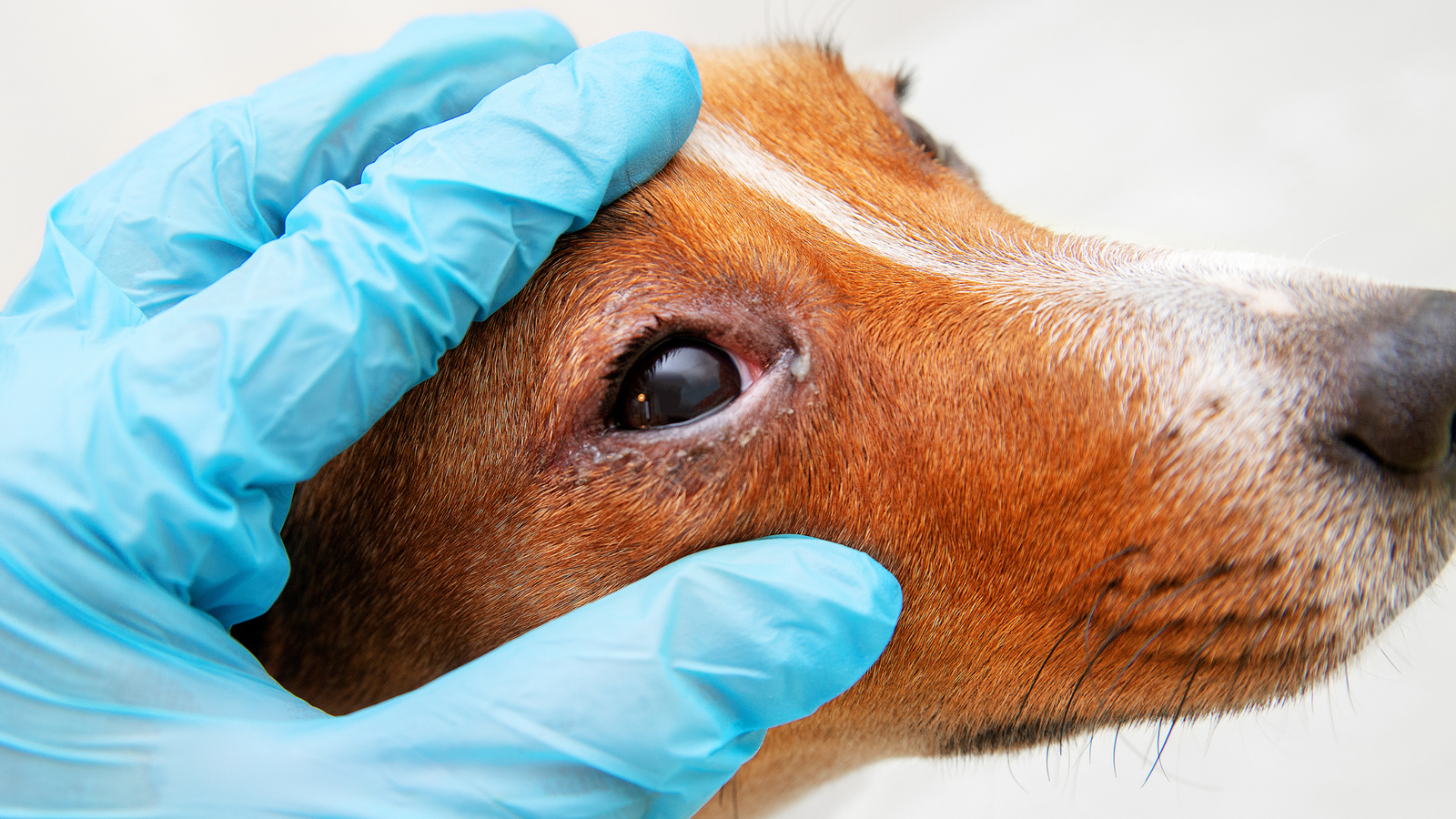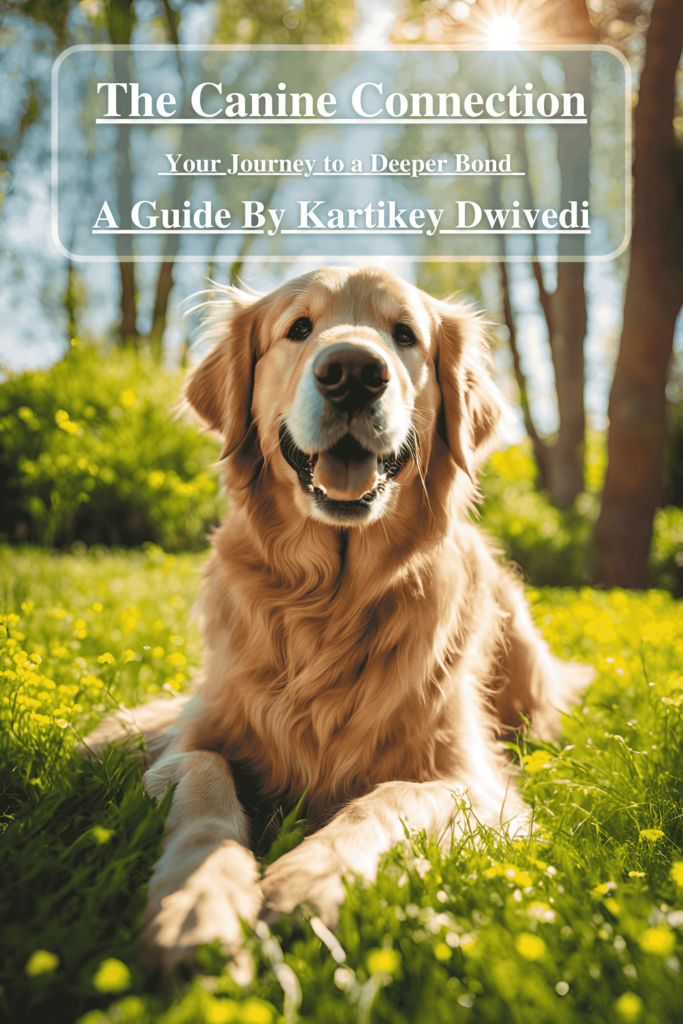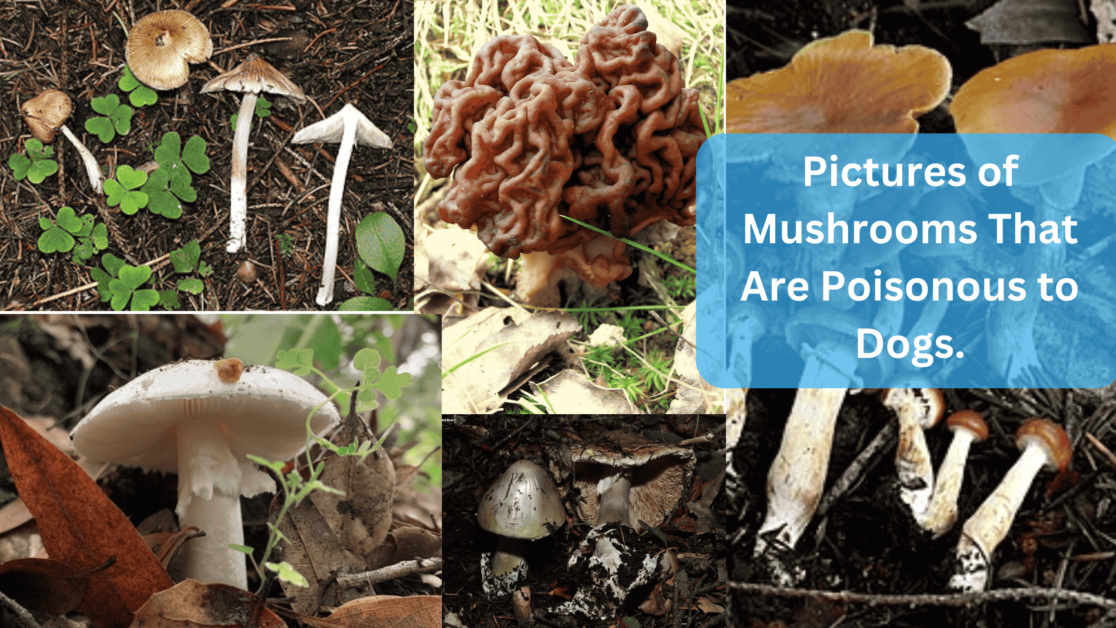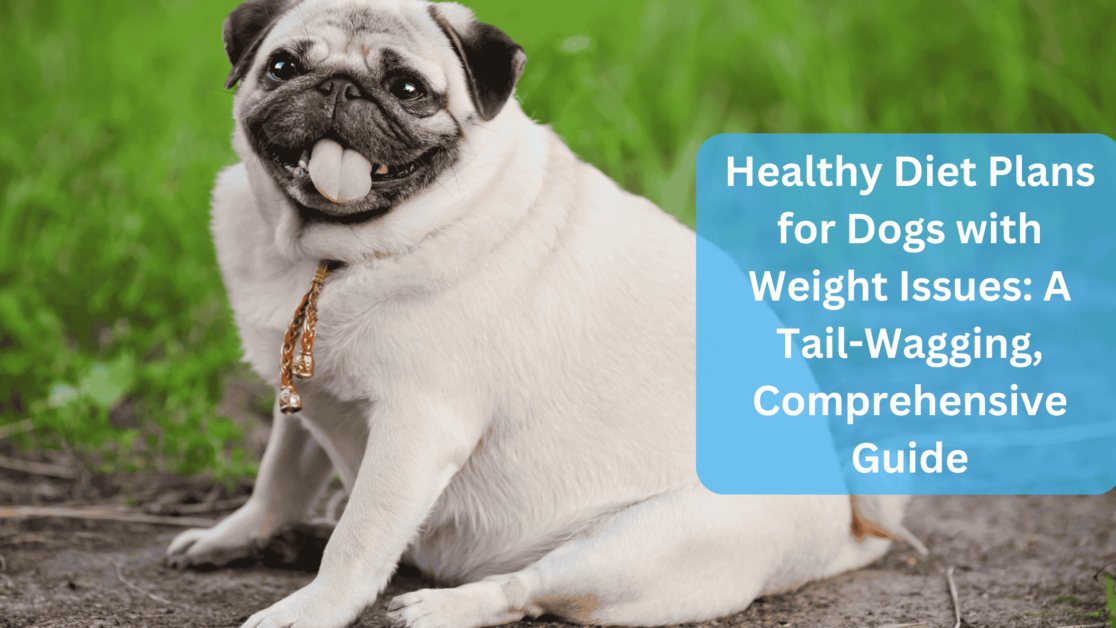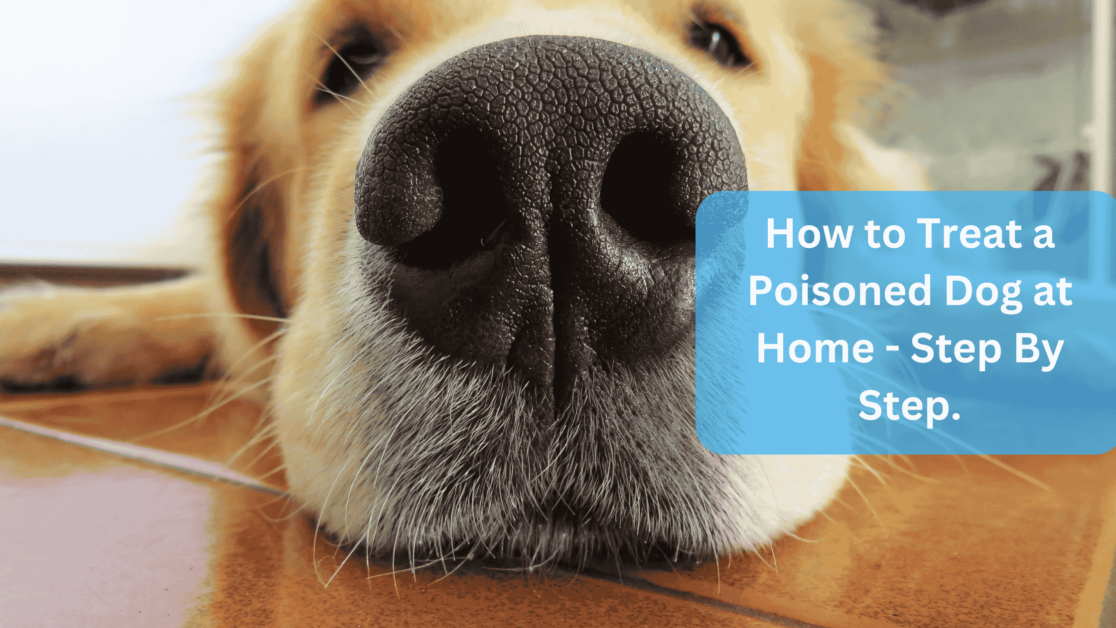Thick Red Veins in Dogs’ Eye – The saying goes, “Eyes are the windows to the soul,” this holds true for our beloved canine companions. As responsible dog owners, we must keep our furry friends’ eyes healthy and vibrant.
However, sometimes we may notice unusual signs, such as thick red veins in our dogs’ eyes.
This peculiar occurrence can be concerning, but fear not, as we delve into understanding the causes, treatments, and preventive measures associated with these veins.
When we observe thick red veins in a dog’s eye, it often indicates an underlying issue that needs attention.
Like humans, dogs can experience various eye conditions that may manifest as these visible veins.
These conditions range from common problems like conjunctivitis to more severe issues like glaucoma.
Understanding and addressing the causes promptly is crucial for maintaining your furry friend’s ocular well-being.
This informative guide will explore the significance of maintaining optimal eye health in dogs and shed light on the topic “thick red veins in dog eyes.”
By grasping the relevance of this keyword, we can better comprehend the potential implications and take the necessary steps to ensure our pets’ eyes stay clear, bright, and healthy.
So, let’s embark on this enlightening journey together as we uncover the secrets behind thick red veins in dogs’ eyes and discover how we can keep those captivating eyes as captivating as ever!
Causes of Thick Red Veins in Dogs’ Eyes
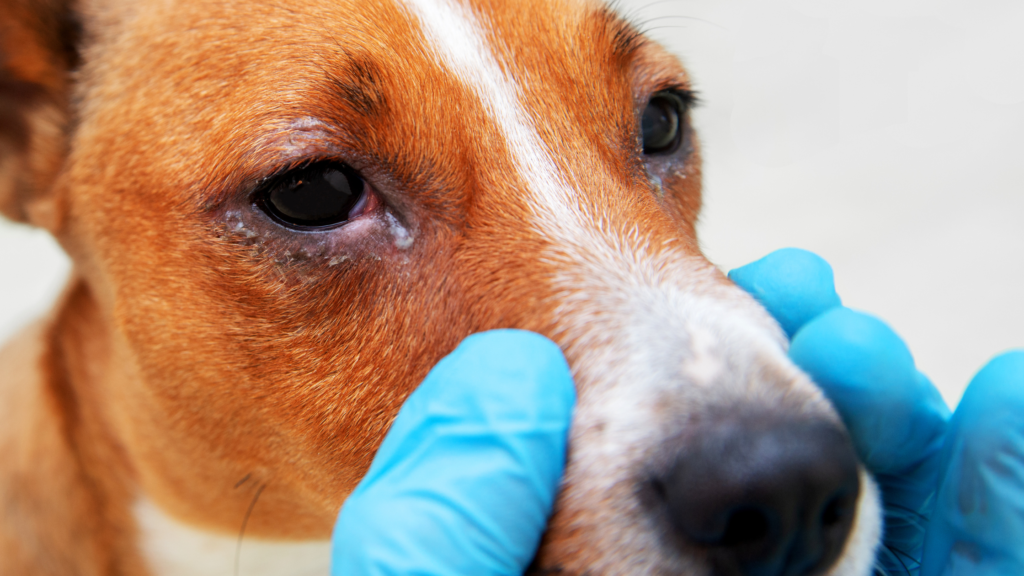
Conjunctivitis in Dogs
One common cause of thick red veins in dogs’ eyes is conjunctivitis, also known as pink eye.
Conjunctivitis occurs when the conjunctiva, the thin membrane covering the eye’s front surface, becomes inflamed.
This inflammation can be triggered by various factors, including allergies, infections, or irritants.
Allergies to pollen, dust mites, or certain chemicals can lead to dog conjunctivitis. Infections like bacterial or viral conjunctivitis can also cause the condition.
Additionally, irritants like smoke, chemicals, or foreign objects can result in conjunctivitis.
When dogs have conjunctivitis, the blood vessels in the conjunctiva become dilated and more visible, making thick red veins appear.
Other symptoms may include redness, excessive tearing, discharge, squinting, or pawing at the eye.
Subconjunctival Hemorrhage in Dogs
Another possible cause of thick red veins in dogs’ eyes is a subconjunctival hemorrhage.
This occurs when a blood vessel in the conjunctiva ruptures, causing blood to accumulate beneath the conjunctival tissue.
Subconjunctival hemorrhages can result from various factors, such as trauma to the eye, vigorous rubbing, high blood pressure, or blood clotting disorders.
Even activities like excessive coughing or sneezing can contribute to a subconjunctival hemorrhage.
When subconjunctival bleeding occurs, the affected area appears as a patch or streak of blood on the white part of the eye, surrounded by dilated red blood vessels.
However, there is typically no associated pain or discharge.
Glaucoma in Dogs
Glaucoma, a severe eye condition, can also cause the appearance of thick red veins in dogs’ eyes. Glaucoma occurs when increased pressure within the eye damages the optic nerve.
The increased intraocular pressure in glaucoma causes the veins in the eye to become engorged and more visible.
If left untreated, glaucoma can result in permanent vision loss and even blindness.
Glaucoma can develop due to various factors, including a malfunction in the eye’s drainage system, underlying health conditions, or genetic predisposition.
Early detection and treatment are crucial to managing glaucoma and preserving a dog’s vision.
Understanding the causes of thick red veins in dogs’ eyes, such as conjunctivitis, subconjunctival hemorrhage, and glaucoma, can help pet owners recognize potential reasons behind this condition.
Seeking prompt veterinary attention and appropriate treatment are vital for ensuring our beloved canine companions’ eye health and overall well-being.
Also Read: Fish Flakes for Dogs: Best Guide
Diagnosis and Examination of Thick Red Veins in Dogs’ Eye
Veterinary Evaluation
Regarding the health of our canine companions’ eyes, it is crucial to consult a veterinarian for a proper diagnosis.
While we may observe the presence of thick red veins in our dog’s eyes, a veterinarian’s expertise is necessary to determine the underlying cause accurately.
During a veterinary eye examination, your veterinarian will carefully examine your dog’s eyes using specialized tools and techniques.
They will assess the overall eye condition, look for any signs of inflammation, check the cornea’s clarity, and observe the size and responsiveness of the pupils.
In addition to a visual examination, your veterinarian may perform specific diagnostic tests to gather more information.
For instance, the Schirmer tear test can help assess tear production, crucial for detecting certain types of conjunctivitis or dry eye syndrome.
They may also measure the intraocular pressure using a tonometer to evaluate the possibility of glaucoma.
Differentiating Causes
Identifying the specific cause of thick red veins in your dog’s eyes is essential for determining the appropriate treatment plan.
Veterinarians employ their expertise to differentiate between conditions that can lead to this symptom, such as conjunctivitis, subconjunctival hemorrhage, and glaucoma.
To differentiate between these causes, veterinarians consider several factors. They carefully examine the appearance of the eye, assessing the presence of discharge, redness, or swelling.
By evaluating the history of the condition, they can gather information about potential triggers, such as recent trauma or exposure to allergens.
Additional diagnostic procedures may be necessary to reach a definitive diagnosis.
Blood tests can help identify any underlying systemic issues contributing to eye problems, such as autoimmune or blood clotting disorders.
In some cases, advanced imaging techniques like ultrasound or specialized ocular imaging may be used to visualize the internal structures of the eye and detect any abnormalities.
By conducting a comprehensive examination and employing diagnostic tools, veterinarians can differentiate between the causes of thick red veins in a dog’s eyes.
This accurate diagnosis sets the foundation for targeted treatment strategies, ensuring your furry friend receives the most appropriate care for their specific condition.
Remember, the expertise of a veterinarian is invaluable in diagnosing and understanding the complex nature of eye conditions.
Seeking professional help is always the best course for your dog’s eye health, as it ensures accurate diagnoses and appropriate treatment plans tailored to your pet’s needs.
Treatment Options for Thick Red Veins in Dogs’ Eye
Medication and Topical Treatments
When treating conditions like conjunctivitis or subconjunctival hemorrhage, veterinarians often prescribe medications to alleviate symptoms and promote healing.
Antibiotic or antiviral eye drops or ointments may be prescribed for conjunctivitis to combat bacterial or viral infections.
Anti-inflammatory medications can help reduce the inflammation associated with conjunctivitis.
Following your veterinarian’s instructions regarding the dosage and application of the prescribed medications is crucial.
Administering the medication as directed ensures optimal effectiveness and promotes faster recovery.
Pay attention to the frequency and duration of treatment, as some medications may require multiple daily applications for a specific period.
While medications can be highly beneficial, being aware of potential side effects or complications is essential.
Some dogs may experience temporary stinging or discomfort upon applying eye drops or ointments. Rarely, an allergic reaction to certain medications may occur.
Contact your veterinarian promptly if you notice any unusual or concerning side effects.
Surgical Interventions
In some instances, surgical intervention may be necessary to treat thick red veins in the eye, mainly when dealing with conditions like glaucoma or underlying structural abnormalities.
Glaucoma, characterized by increased intraocular pressure, often requires surgical management to alleviate pressure and prevent further damage to the optic nerve.
Surgical procedures for glaucoma may include laser therapy to improve fluid drainage or the surgical implantation of a shunt to redirect excess fluid from the eye.
These procedures aim to regulate intraocular pressure and preserve vision.
When considering surgical interventions, weighing the risks and benefits is essential. While surgery can be highly effective in managing specific conditions, it has risks.
Potential complications may include infection, bleeding, or adverse reactions to anesthesia.
Your veterinarian will thoroughly assess your dog’s overall health and discuss the potential benefits and risks of the specific surgical procedure.
It is crucial to have open and honest communication with your veterinarian when discussing treatment options.
They will guide you in making informed decisions regarding the best action for your dog’s eye condition.
By carefully considering the available treatments and their potential outcomes, you can ensure that your furry companion receives the most appropriate and effective care.
Early intervention and proactive treatment significantly promote your dog’s eye health and prevent complications.
Regular follow-up appointments and close monitoring of your pet’s progress are essential to gauge the effectiveness of the chosen treatment plan.
Always consult your veterinarian for any concerns or questions throughout the treatment process.
Prevention and General Dog Eye Care
Maintaining Eye Health in dogs
Just as we prioritize our own eye health, it is equally essential to establish a regular eye care routine for our furry friends.
By implementing a few simple practices, we can help prevent eye infections and conditions in dogs.
First and foremost, practicing good hygiene is crucial. Please keep your dog’s face clean by gently wiping away any discharge or debris that may accumulate around their eyes.
Use a clean, soft cloth or pet-safe wipes designed explicitly for eye cleaning. Be careful not to touch the eye directly, and avoid using harsh chemicals or soaps.
Additionally, it’s essential to prevent irritants from entering your dog’s eyes.
Protect your dog’s eyes from dust, debris, and UV rays outdoors using dog-friendly sunglasses or goggles.
Suppose you notice your dog excessively rubbing or pawing at their eyes. In that case, it may indicate discomfort or an underlying issue, so seek veterinary attention promptly.
Maintaining your dog’s overall health also contributes to their eye health. Provide a balanced diet rich in essential nutrients, as proper nutrition supports ocular health.
Regular exercise helps promote good blood circulation, which also benefits the eyes. Consult your veterinarian for specific dietary recommendations tailored to your dog’s needs.
Regular Veterinary Check-ups
Routine visits to the veterinarian are crucial for overall wellness and play a vital role in maintaining your dog’s eye health.
Regular eye examinations by a veterinarian can help identify potential issues before they worsen, ensuring timely intervention and treatment.
During these check-ups, your veterinarian will thoroughly examine your dog’s eyes, assessing their clarity, checking for any signs of inflammation or abnormalities, and measuring intraocular pressure if necessary.
By monitoring the health of your dog’s eyes regularly, your veterinarian can detect any subtle changes or early signs of eye conditions.
The frequency of veterinary check-ups may vary depending on your dog’s age, breed, and pre-existing eye conditions.
Puppies and senior dogs may require more frequent visits to monitor their eye health. Your veterinarian can guide the appropriate scheduling of check-ups based on your dog’s needs.
In addition to regular veterinary visits, be vigilant for changes in your dog’s eye appearance or behavior.
If you notice persistent redness, excessive tearing, cloudiness, discharge, or other concerning signs, seek veterinary attention promptly.
Early detection and intervention are crucial in managing eye conditions and preserving your dog’s vision.
You can minimize the risk of eye infections and conditions by prioritizing regular eye care and proactively approaching your dog’s overall health.
Prevention and early intervention are vital to ensuring the long-term well-being of your furry friend’s precious eyes.
Also Read: Can You Board a Dog in Heat? A Comprehensive Guide 2023
Conclusion
In conclusion, thick red veins in dogs’ eyes can indicate various underlying conditions, such as conjunctivitis, subconjunctival hemorrhage, or glaucoma.
Prompt veterinary attention is crucial in accurately diagnosing the cause and providing appropriate treatment options.
We discussed the importance of maintaining optimal eye health in dogs and highlighted the keyword’s relevance.
Conjunctivitis, a common condition in dogs, can lead to thick red veins, and treatment may involve topical medications and addressing the underlying cause.
Subconjunctival hemorrhage, often caused by trauma or underlying blood clotting disorders, may require monitoring and, in some cases, identifying and managing the root cause.
Glaucoma, a severe eye condition, can result in the appearance of thick red veins. Timely diagnosis and treatment, which may involve medication or surgical interventions, are essential for preserving vision.
We emphasized the significance of regular veterinary check-ups and proper eye care routines to prevent and detect eye conditions early on.
Maintaining good hygiene, protecting against irritants, and ensuring a balanced diet contribute to overall eye health in dogs.
In conclusion, seeking professional advice from a veterinarian is crucial if you notice thick red veins in your dog’s eyes.
Each case is unique, and accurate diagnosis and appropriate treatment are essential for your dog’s well-being.
Remember, your veterinarian is the best resource for tailored advice and treatment options for your dog’s needs.
By staying proactive and attentive to your dog’s eye health, you can help ensure a lifetime of clear vision and emotional ocular well-being for your beloved furry companion.
